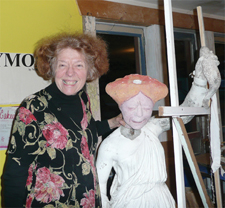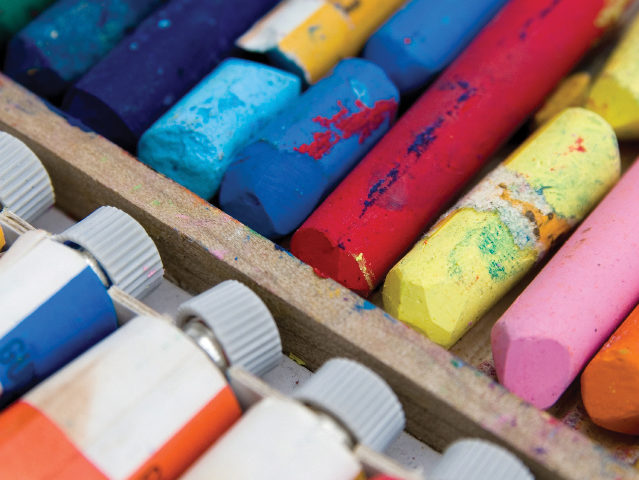A truly grand cinema!
 Although the Grand Cinema had had loyal patrons and volunteers, it was on the brink of financial disaster. It was in April 1997, when, after considerable work by a core group, the Grand Cinema was declared to be a not-for-profit entity. Since that time, it has become a community treasure and a resounding success.
Although the Grand Cinema had had loyal patrons and volunteers, it was on the brink of financial disaster. It was in April 1997, when, after considerable work by a core group, the Grand Cinema was declared to be a not-for-profit entity. Since that time, it has become a community treasure and a resounding success.
When I spoke with Executive Director, Philip Cowan, he said that volunteers have been an integral part of the Grand’s success. It was volunteers that initially converted the Grand to its present 501(c)3 status. In the process, volunteers became board members and established the structure for operation within the new status. Volunteers assure that the Grand is open every day of the year, working three-hour shifts, selling and collecting tickets, selling popcorn and helping guests with any special needs. The volunteer corps is a reflection of the Grand’s community appeal, for it’s comprised of a wide range of ages, from teens to octogenarians.
Cowan, who came to the Grand via a five-year stint working for the Rainiers, holds degrees in finance and international business. He has had a life-long interest in films, “especially the ones that make you think afterwards.†So, as the person who selects all the films the Grand shows, Cowan is guided not by the moneymaking aspect of any given film. Consequently, the Grand has become an art house, which means that both domestic and foreign films are chosen for quality rather than profit, and a weeklong film festival has become an annual event.
Being a committee of one for film selection, Cowan reads all the trade journals and magazines, scans various Internet sites to see how films have been rated, and watches a trailer or two. (A trailer is a small portion of a film that is shown as an enticement to watch the whole thing.) In addition, he attends film festivals such as Sundance, and views films that have been recommended to him. This is not your average 40-hour-a-week job, but, Cowan says unabashedly that he loves his work.
Cowan speaks very highly of his staff, especially their flexibility in filling in on a job and their creativity in getting their jobs done. They are guided by the three tenants outlined in their mission: educate the viewing public regarding film; make the viewing experience a quality one; encourage the development of a passion for film as an art form.
Under the guidance of Cowan and the board, the Grand is always open to new ideas or a fresh approach to an old one. Often implementing these ideas requires a partnership. Farrelli’s Pizza and the Grand Cinema have partnered for what is called DATE NIGHT which includes pizza, wine, dessert and two tickets to the Grand. Film lectures, a Q&A session over Skype with a director and a community round table on current issues are among the special events. A relatively new addition is the one-day showing of new or classic films every Tuesday of the year. On Tuesdays, the matinee is usually mid-afternoon and the second showing is early evening. And that will be the only day/date that the chosen film will be shown. Thus, in addition to the regular program of films, Cowan can insert an additional 52 films each year.
I would be remiss if I did not mention the fact that you can become a member of the Grand Cinema. The idea of receiving $1.50 discount on all movies when you present your membership card sounds good, and it is hospitable to also receive a free, small popcorn, but the benefit that really caught my attention is free parking. Yes! Through partnership with Pierce County Alliance, free parking for members is available in a lot just a block from the theater.  It should be noted that you can also buy “movie money†in $5 increments which can be used for anything at the Grand.
To learn more, visit the Grand’s website www.grandcinema.com for show times, trailers, and special events. The Grand Cinema is at 606 Fawcett Avenue, Tacoma, WA 98402-2321, (253) 593-4474.


 On Aug. 13, the B2 Fine Art Gallery/Studio celebrated it’s first anniversary as one of Tacoma’s dynamic galleries “The Weekly Volcano” (August 1, 2011) called the B2 (pronounced B squared) “the hottest new gallery in town.â€Â In its one-year time, this gallery has garnered positive attention.
On Aug. 13, the B2 Fine Art Gallery/Studio celebrated it’s first anniversary as one of Tacoma’s dynamic galleries “The Weekly Volcano” (August 1, 2011) called the B2 (pronounced B squared) “the hottest new gallery in town.â€Â In its one-year time, this gallery has garnered positive attention.